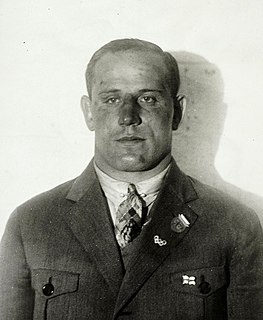Related Research Articles

Friedrich Gustav Maximilian Schreck, known professionally as Max Schreck, was a German actor, best known for his lead role as the vampire Count Orlok in the film Nosferatu (1922).

(May 29, 1892 – May 12, 1944) was an American writer known primarily for his Western stories using the pseudonym Max Brand. He also created the popular fictional character of young medical intern Dr. James Kildare for a series of pulp fiction stories. His Kildare character was subsequently featured over several decades in other media, including a series of American theatrical movies by Paramount Pictures and Metro-Goldwyn-Mayer (MGM), a radio series, two television series, and comics. Faust's other pseudonyms include George Owen Baxter, Evan Evans, George Evans, Peter Dawson, David Manning, John Frederick, Peter Morland, George Challis, Peter Ward, Frederick Faust and Frederick Frost. As George Challis, Faust wrote the "Tizzo the Firebrand" series for Argosy magazine. The Tizzo saga was a series of historical swashbuckler stories, featuring the titular warrior, set in Renaissance Italy.

Marion Byron was an American movie comedian.

Johan Cornelius "Snövit" Richthoff was a Swedish wrestler. He competed in the freestyle heavyweight division at the 1924, 1928 and 1932 Summer Olympics and won gold medals in 1928 and 1932; he shared fourth place in 1924.

Väinö Kokkinen was a Finnish Greco-Roman wrestler. He won two Olympic gold medals in the middleweight category, in 1928 and 1932, and finished in fourth place in 1936. Between 1925 and 1933 he won one gold and four silver medals at the European championships as well as six national titles.

Fritz Kampers was a German film actor. He appeared in more than 250 films between 1913 and 1950.

Otto Wallburg was a German actor and Kabarett performer. He was a prolific film actor during the late silent and early sound era.
The Association of Revolutionary Visual Artists of Germany was an organization of artists who were members of the Communist Party of Germany. Known primarily by its shortened name, "Asso", it was founded in March 1928. The organization produced posters, placards, propaganda graphics for Communist organizations.
Carl Hoffmann was a German cinematographer and film director.

Taxi at Midnight is a 1929 German silent thriller film directed by Harry Piel and starring Piel, Betty Bird and Philipp Manning. It was shot at the Staaken and Grunewald Studios in Berlin. The film's art direction was by Fritz Maurischat and Max Knaake.

Robert Neppach was an Austrian architect, film producer and art director. Neppach worked from 1919 in the German film industry. He oversaw the art direction of over eighty films during his career, including F.W. Murnau's Desire (1921) and Richard Oswald's Lucrezia Borgia (1922). Neppach was comparatively unusual among set designers during the era in having university training.
Max Obal was a German actor, singer, screenwriter, and film director. He co-directed the 1927 swashbuckler Rinaldo Rinaldini featuring Hans Albers.
The Brandenburg Arch is a 1929 German silent drama film directed by Max Knaake and William Dieterle and starring Paul Henckels, June Marlowe and Aribert Mog. It was made by the German branch of Universal Pictures.
Triumph of Love is a 1929 German silent film directed by William Dieterle and starring Dieterle, Lien Deyers and Olaf Fønss.

Fair Game is a 1928 German silent drama film directed by Holger-Madsen and starring Evelyn Holt, Fred Louis Lerch and Bruno Kastner. The film was adapted from the Arthur Schnitzler play.
The Sinner is a 1928 German silent drama film directed by Mario Bonnard and starring Elisabeth Pinajeff, Hans Stüwe, and Helga Thomas. The film's art direction was by Max Knaake.
Storm of Love is a 1929 German silent film directed by Martin Berger and starring Marcella Albani, Nikolai Malikoff, and Boris Michailow.

Must We Get Divorced? is a 1933 German comedy film directed by Hans Behrendt and starring Else Elster, Aribert Mog and Iván Petrovich.

Today Is the Day is a 1933 German comedy film directed by Kurt Gerron and starring Hans Albers, Luise Rainer and Oskar Karlweis. It features a number of jazz interludes. The film's sets were designed by the art directors Max Knaake and Julius von Borsody.
References
- ↑ Greco p.186